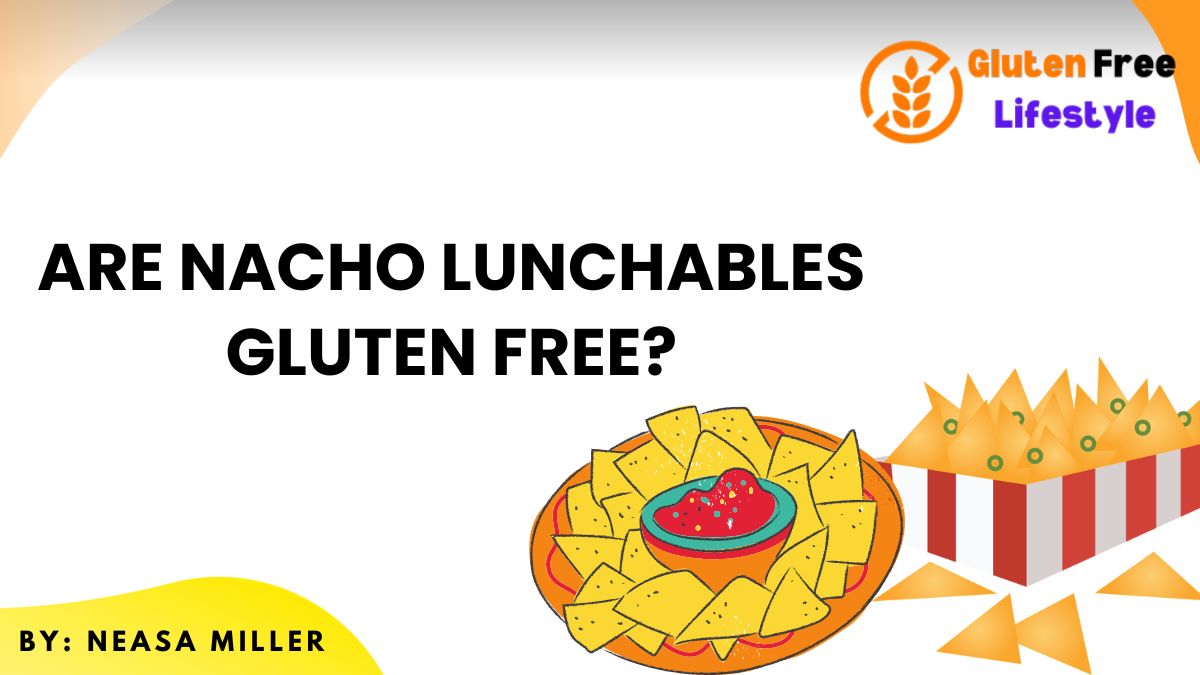Gluten-free diets have become increasingly popular in recent years, with more and more people choosing to avoid gluten for health or lifestyle reasons. This has led to greater demand for gluten-free versions of favorite foods that traditionally contain gluten, like pizza, pasta, and various snack foods. One popular snack food that often comes up in discussions around gluten is Lunchables, specifically the nacho variety. As credentialed dietitians, we will analyze the ingredients and manufacturing processes to determine if nacho Lunchables can be safely consumed on a gluten-free diet.
Gluten Overview
Gluten is a protein found in grains like wheat, barley and rye. For those with celiac disease or non-celiac gluten sensitivity, consuming gluten triggers an autoimmune response that damages the small intestine. This can cause symptoms like abdominal pain, bloating, diarrhea, constipation, vomiting, fatigue and more. The only treatment is a strict lifelong gluten-free diet. For this reason, it’s important that those who require a gluten-free diet are able to identify which foods contain gluten and which are safe to eat.
Are Nacho Lunchables Ingredients Gluten-Free?

The main ingredients in nacho Lunchables are:
- Chips – Typically made from corn, a naturally gluten-free grain.
- Cheese sauce – Contains ingredients like milk, cheese, and thickeners like cornstarch or potato starch that are gluten-free.
- Salsa – Made from naturally gluten-free ingredients like tomatoes, onions, peppers, spices.
- Nacho chips – Also usually made from corn.
None of these central ingredients inherently contain gluten. However, checking for additional sources of gluten like cross-contamination is still important.
Assessing Cross-Contamination Risk
When evaluating whether a processed food like Lunchables is gluten-free, it’s important to consider the risk of cross-contamination during manufacturing. This occurs when gluten-containing grains come into contact with the gluten-free ingredients or processing equipment. Some key points regarding Lunchables:
- Made on shared equipment – Wheat-based foods are made in the same facilities.
- “May contain wheat” disclaimer – The company cannot guarantee no cross-contamination.
- No “gluten-free” labeling – Product is not certified or tested gluten-free.
This indicates there is significant risk of gluten cross-contamination occurring with nacho Lunchables.
Can Nacho Lunchables Be Considered Gluten-Free?
Given the high risk of cross-contamination and lack of certification as gluten-free, we cannot recommend nacho Lunchables as a reliable gluten-free option. The ingredients may be gluten-free, but trace amounts of gluten could still be present. Those with celiac disease or severe gluten sensitivity are advised to avoid nacho Lunchables and choose certified gluten-free products instead to ensure safety. People with milder gluten sensitivity may be able to tolerate occasional consumption, but should be aware that gluten exposure is still possible.
In summary, while the core ingredients in nacho Lunchables do not contain gluten, cross-contamination during manufacturing makes their gluten-free status uncertain. Cautious avoidance is best for those requiring strict gluten avoidance.
Gluten-Free Snack Alternatives
For a safer gluten-free snacking option, we recommend choosing certified gluten-free products made in dedicated facilities. Some nacho-style alternatives may include:
- Corn chips with cheese sauce or bean dip
- Rice crackers with sliced cheese
- Popcorn seasoned with taco seasoning
- Bean or lentil chips with salsa
- Plain potato chips with gluten-free dip
Checking labels for a “gluten-free” certification seal can help identify truly gluten-free snack foods. Preparing snacks at home from single-ingredient foods can also help minimize contamination risk. Following a gluten-free diet requires diligence, but safe and delicious snacking options abound.
My Suggestions as a Dietitian
As dietitians, we recommend those with celiac disease or non-celiac gluten sensitivity adhere to a strict gluten-free diet by avoiding any foods with uncertainty around gluten cross-contamination. However, we understand completely avoiding all trace gluten may be unrealistic for some. Here are some tips we can offer:
- Communicate with your doctor about your level of gluten sensitivity and acceptable threshold. Those with milder sensitivities may be able to tolerate occasional, low-level exposure.
- Check labels carefully and avoid anything with a “may contain wheat” type statement, like nacho Lunchables. These have higher risk.
- Look for a certified gluten-free seal from organizations like GFCO or GIG. This ensures adherence to <20ppm gluten threshold.
- Ask brands about testing for gluten or if they follow GMPs to prevent cross-contact. Some may provide more information if asked directly.
- Notify brands when you see conflicting labels information. They may update based on consumer feedback.
- Purchase dedicated gluten-free brands made in facilities free from gluten grains. These have lowest risk.
- Cook more meals at home using naturally gluten-free whole foods. This gives you best control.
- Enjoy snacks like fresh fruits and veggies with GF dips, nut butters, or hummus for low-risk gluten-free munching.
While nacho Lunchables themselves pose too much uncertainty for those requiring strict gluten avoidance, there are ways to maintain a gluten-free diet while allowing occasional, low-risk treats. Working with your healthcare team and making informed choices can help strike the right balance for your individual needs and improve quality of life on a gluten-free diet.
Related Posts

I’m Neasa Miller, a professional dietitian with 5 years of experience. I founded glutenfreelifestyles.org to assist people online in embracing gluten-free living. Read more about me
